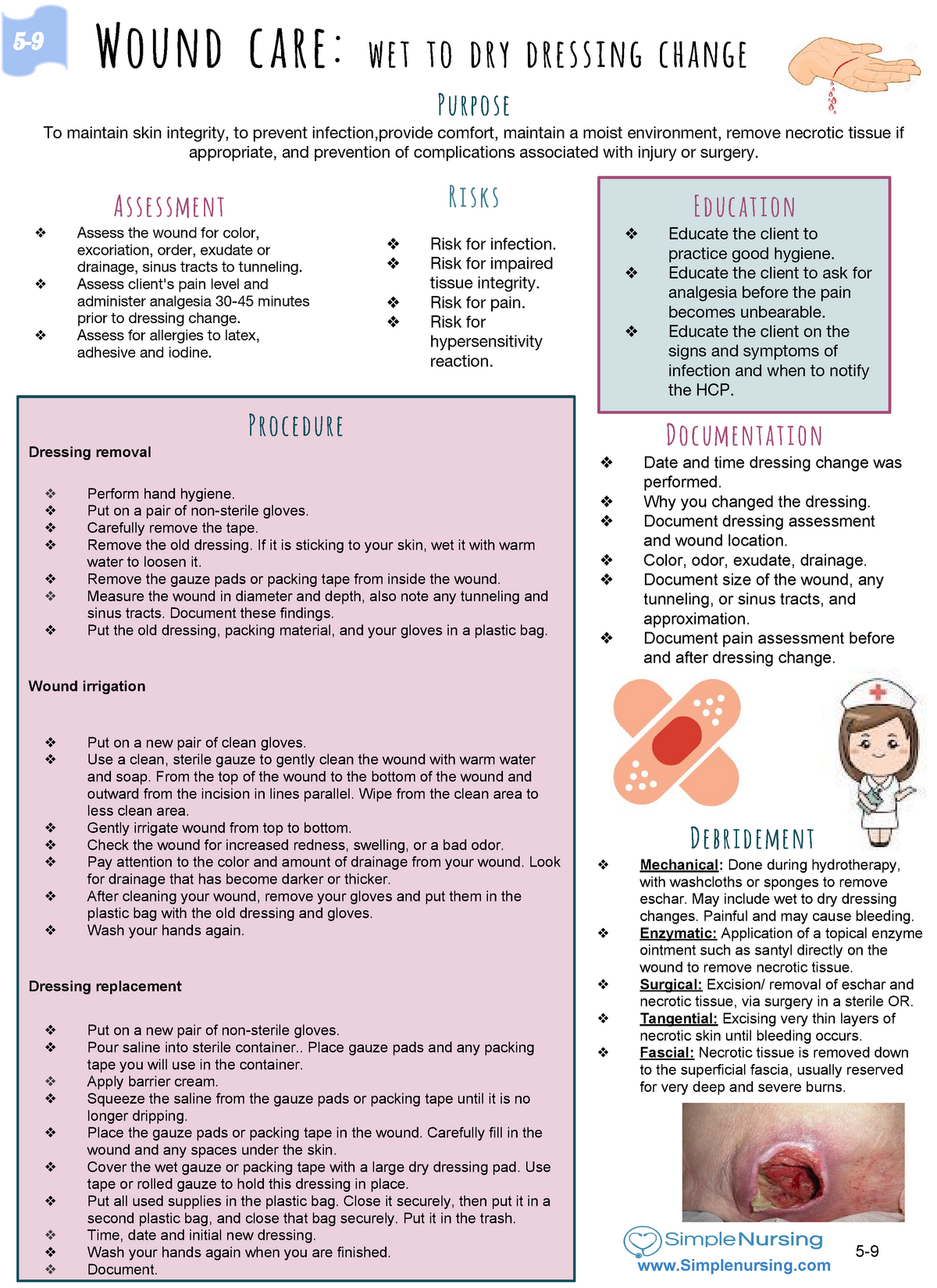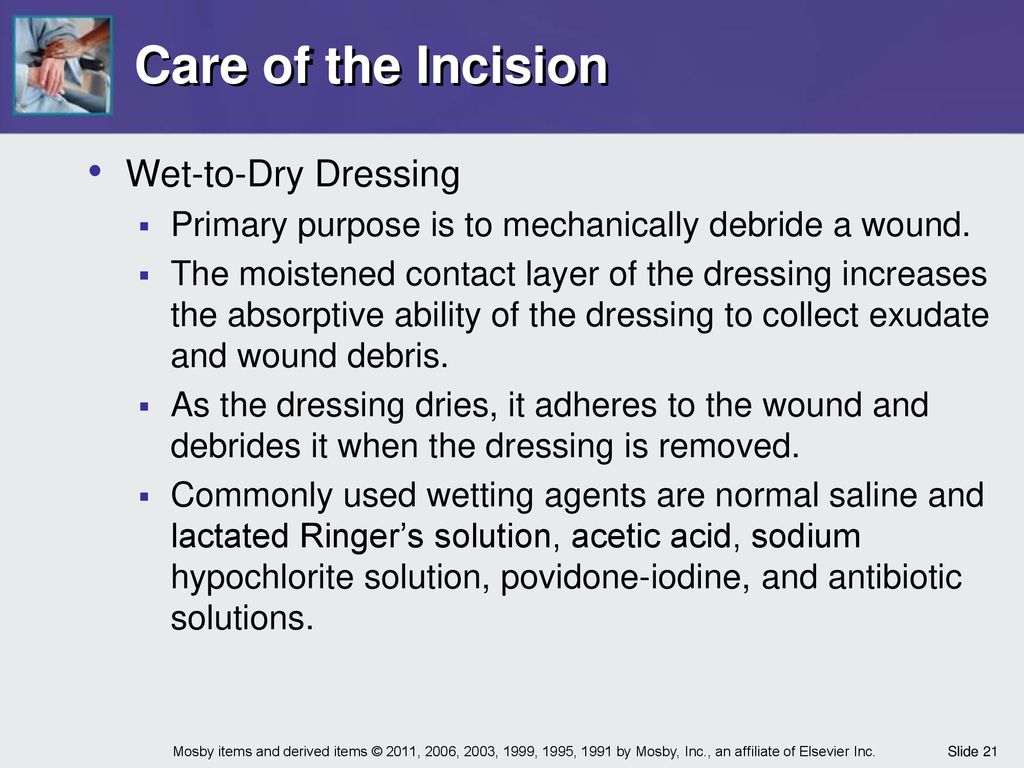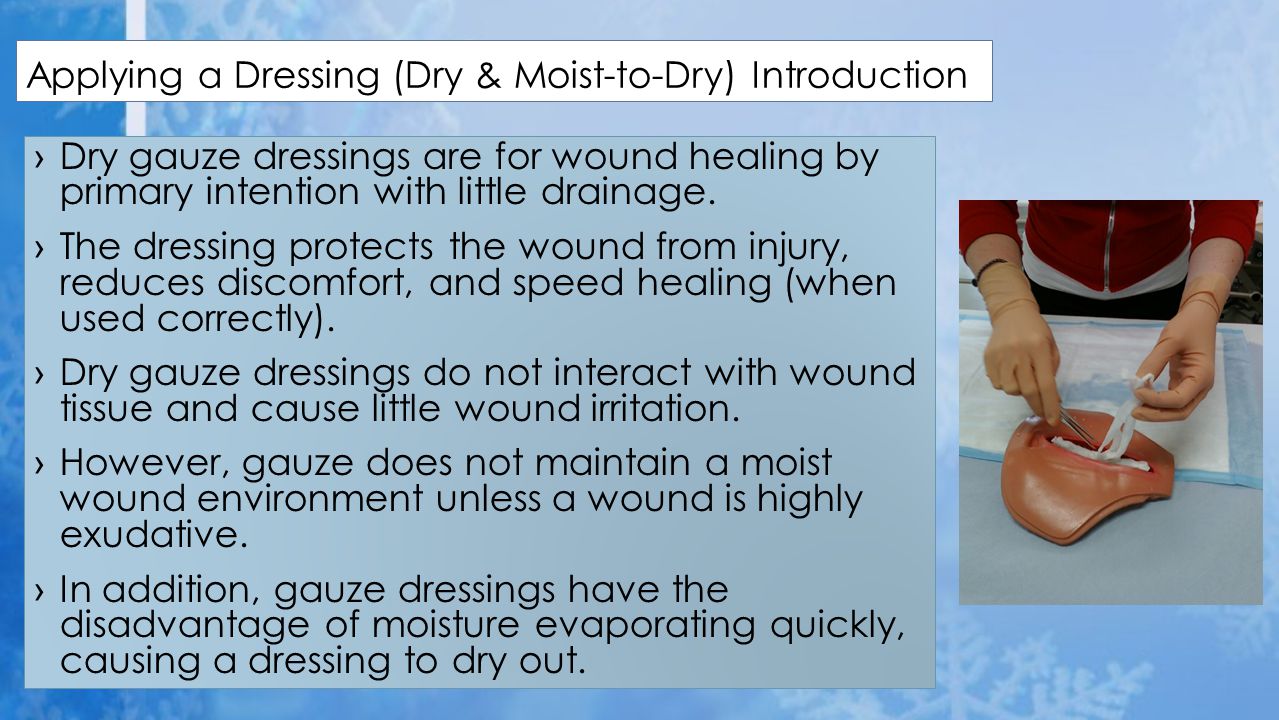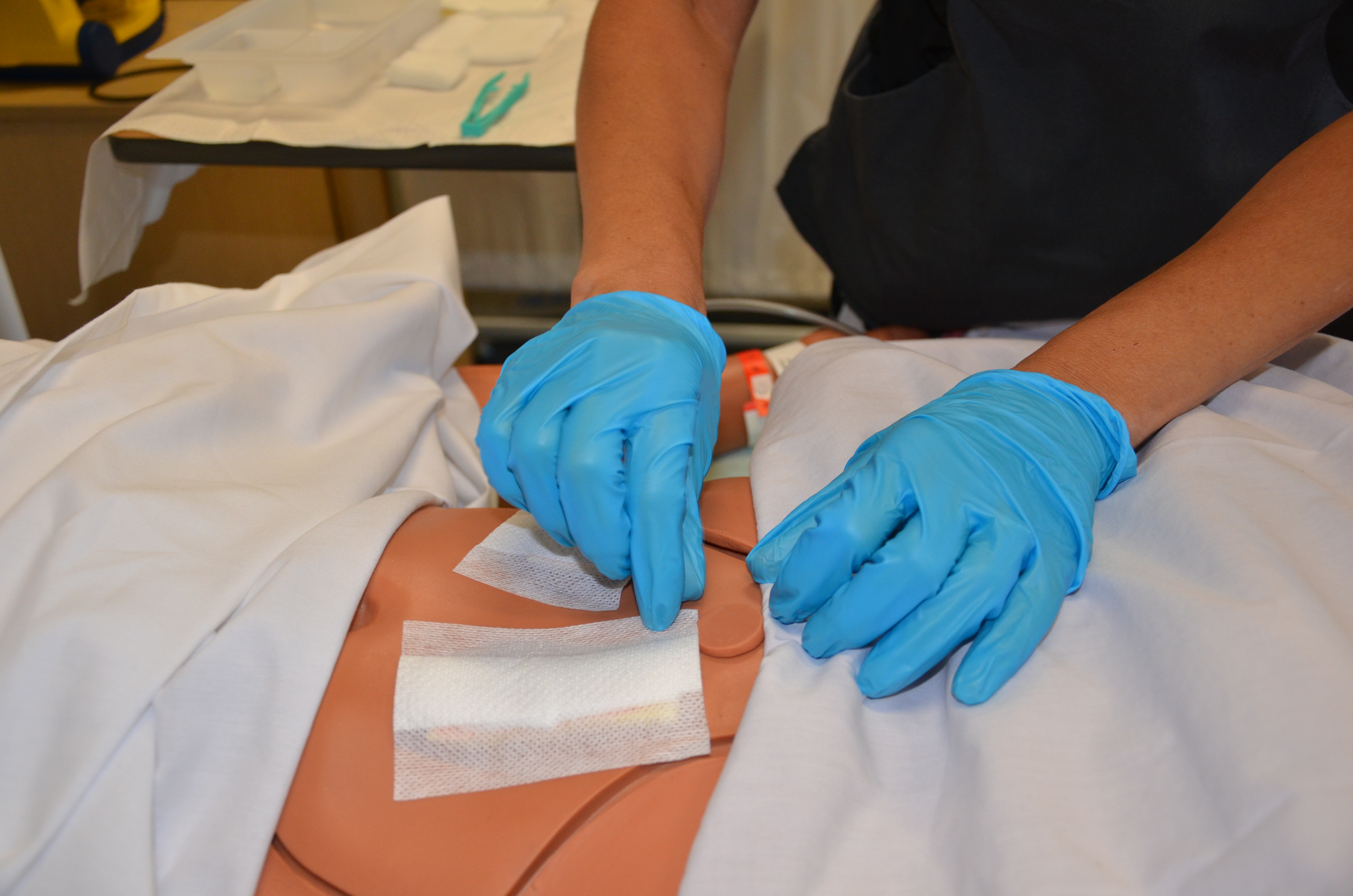wet to dry dressing procedure
Wring out excess moisture from the gauze. If you have well water use bottled water or sterile saline.

Wound Care Notes Wound Care Wet To Dry Dressing Change Assessment Assess The Wound For Color Studocu
This involved applying moist saline or other solution ie Dakins to gauze placing it into a wound bed.

. You will create a Wet-To-Dry Dressing Guide for Medical Assistants. Open the gauze fully. Once the gauze is dry.
Fluff and pull apart gauze to create a. No pulling or stretching. Secure dressing with tape or Montgomery straps if dry or wet to damp dressing.
Lift dressing facing away from patient and assess. Wet to Dry Dressings Request Your Consultation. To best prepare and use wet-to-dry dressings follow these instructions.
Httpsbitly3uyTWEuLearn whats working for other N. Nursing facility wound care discussing Wet to Dry Dressings and Demonstrating wet to dry dressings-----View Our Library of Procedure. Then its put on the wound and allowed to dry.
Traditionally when wounds required debridement wet to dry dressings were used. Take 1 piece out and get it wet using regular tap water from the sink. Put on a new pair of non-sterile gloves.
Tear strips 1-1 ½ inch beyond dressing. Applying a wet-to-dry dressing. Your task is to learn the procedure for a wet-to-dry dressing change.
Your wound should not bleed. Click here for your free quiz. Squeeze the gauze until it is almost dry.
Follow these steps to clean your wound. Lift the corners of the dressing towards the center of the wound. Put on a new pair of non-sterile gloves.
A piece of gauze is moistened with a cleansing solution. If dressing sticks moisten with normal saline flush before removing it. Wash your hand before and.
Using a wet-to-dry dressing involves placing moist saline gauze onto the wound bed then allowing it to dry and adhere to the tissue in the wound bed. Moisten remaining sterile 4x4 gauze in solution in the sterile bowl. Gently pat it dry.
Use a clean soft washcloth to gently clean your wound with warm water and soap. Wet the gauze with the saline or contact solution. Follow these steps to clean your wound.
Tape like window pane or picture frame. Your guide 2 pages should include a description of. A wet to dry dressing is used to remove dead tissue from a wound.
Wet to Dry Dressings. Use a clean soft washcloth to gently clean your wound with warm water and soap. Open a new package of dry gauze.
Wet to Dry Dressing Changes twice daily Follow these steps to remove your dressing. Wet-to-dry dressings have been standard procedure for home care wound care patients although research indicates gauze dressings are not an optimal wound care modality for the patient the.

How To Change A Wound Dressing At Home In 8 Steps Sonas
4 6 Moist To Dry Dressing And Wound Irrigation And Packing Clinical Procedures For Safer Patient Care

Dressing Changes Wet To Dry Nursing Skills Youtube

Wet To Dry Dressing Youtube Nursing Videos Wet Nurse

Wet To Dry Dressing Change Youtube

Chapter 13 Surgical Wound Care Ppt Download
4 6 Advanced Wound Care Wet To Moist Dressing And Wound Irrigation And Packing Clinical Procedures For Safer Patient Care
4 6 Moist To Dry Dressing And Wound Irrigation And Packing Clinical Procedures For Safer Patient Care
4 6 Advanced Wound Care Wet To Moist Dressing And Wound Irrigation And Packing Clinical Procedures For Safer Patient Care

Moist Wound Healing The New Standard Today S Veterinary Practice
4 6 Moist To Dry Dressing And Wound Irrigation And Packing Clinical Procedures For Safer Patient Care

Nur 142 Skill 39 1 Applying A Dressing Dry Moist To Dry Ppt Video Online Download
4 6 Moist To Dry Dressing And Wound Irrigation And Packing Clinical Procedures For Safer Patient Care

How To Perform Wet To Dry Dressing Nursing Crib

4 6 Advanced Wound Care Wet To Moist Dressing And Wound Irrigation And Packing Clinical Procedures For Safer Patient Care
4 6 Moist To Dry Dressing And Wound Irrigation And Packing Clinical Procedures For Safer Patient Care

Treating Pressure Injuries Cleaning And Dressing
4 6 Moist To Dry Dressing And Wound Irrigation And Packing Clinical Procedures For Safer Patient Care
4 6 Moist To Dry Dressing And Wound Irrigation And Packing Clinical Procedures For Safer Patient Care